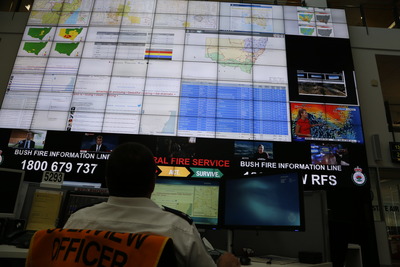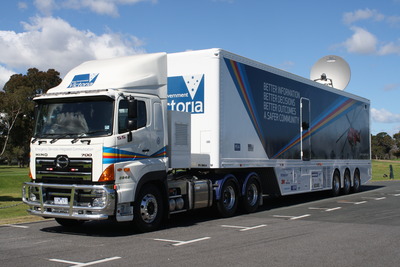Smart software battles natural disasters
Wednesday, 11 December, 2013
Smart software is helping emergency services agencies gather and analyse information in a more timely way.
Australia’s key disaster management agencies have joined forces to tackle the problem of how to access and interpret information gathered during bushfires and other natural disasters to help emergency services save lives and property.
“Currently, there are many ways emergency services and the community accesses official, crowd-sourced and social media information during natural disasters,” CSIRO’s Digital Productivity and Services Flagship Research Leader Alan Dormer said.
“There is a real need for a united approach to help bring all of this information together in a way that makes it easier to understand, and make quick and informed decisions on how to respond to minimise the risk to life and property.”
A two-day Building a System of Systems for Disaster Management event held in November 2013 saw key agencies from across the country look at how they currently access vital information during emergencies and how they can work together to improve on their systems for future benefit.
“Our aim is to develop a … plan of attack on how to address the research and information concerns that restrict our ability to achieve full situational awareness during a disaster at a national scale,” Dormer said.
Emergency services, such as the NSW Rural Fire Service, are already using some technologies, like the CSIRO-developed Emergency Situation Awareness (ESA), to supplement information from other sources.

“Minimising the time for communication and integration of this information frees up time for discussion, considering options and results in faster and better decisions,” Dormer said. “Having this information in an accessible form also enables incidents to be replayed and reviewed so that we can learn and respond better next time.”
CSIRO is working on a suite of information-based tools for disaster management, including: predictive modelling of floods, bushfires and tsunamis; risk analysis; support tools for community resilience; and apps for disaster recovery.
Social media’s role
During the recent NSW bushfires, the NSW RFS used ESA and Vizie tools in its state operations centre to detect minute-by-minute, unusual patterns in tweets that would provide information on emerging fires.
Anthony Clark, group manager of corporate communications, NSW RFS, said that fire agencies like the NSW RFS have been using social media to push information out to and engage with the community during emergency situations.
“However, the challenge now is how to harness social media and use it as a reliable source of information and intelligence,” Clark said. "With more than 470 million impressions of the hashtag #nswfires during the October fires, it’s a significant challenge to monitor, sort and analyse that amount of information.”
Mobile incident management
The National Safety Agency, supported by the Victorian Fire Services Commissioner, has developed a mobile test platform (or truck) called SAMMI, Strategically Activated to Monitor and Manage Incidents. Over a two-year period, NSA will deliver a new emergency services integrated communications vehicle, leveraging high-capacity broadband data for use on a smartphone for all emergency services frontline and command personnel, providing them with access to the right information at the right time.


The vehicle will be located close to major emergency incidents and incorporates over 30 screens, including CSIRO software developed for analytics and disaster simulation. SAMMI provides a comprehensive incident management platform through multiple perspectives including weather location information via cameras, hydrology data, real-time images from emergency services operators’ helmet-held cameras, email information, dashboards with different knowledge sources, reporting from TV stations and videoconferencing capabilities between the vehicle and the state control centre (SCC).
2024–25 Thought Leaders: Tim Karamitos
Tim Karamitos from Ericsson discusses the growth of private 5G networks, the importance of...
ARCIA update: that's a wrap for 2024
That's it, 2024 is a wrap as far as ARCIA is concerned — and what a year 2024 has been...
RFUANZ report: a call to action on training
RFUANZ has been supporting industry training provider E-tec in the development of a Level 4 NZQA...





